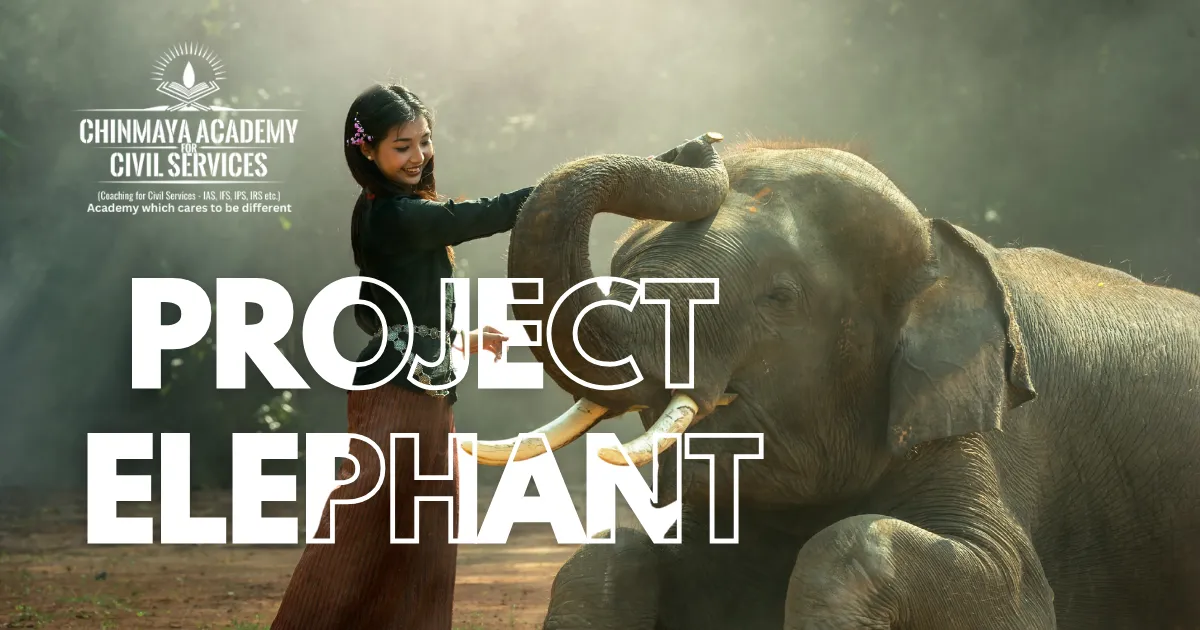
Within Asia, although elephants occur in 13 countries, India holds more than 60% wild elephant populations of the globe. In India, 10 landscapes have been identified by Elephant Tasks Force as regions on the principles of elephant habitat contiguity and have distinct populations with occasional genetic exchange. Elephant is a National Heritage animal of India and is protected under Seclude I of Wild Life Protection Act, 1972.
Need for conservation of elephants
- Elephants are often referred to as ecosystem engineers.
- Help in seed dispersal, nutrient cycling and biomass removal
- Assisted vegetation generation through trampling and other effects
- Elephant forests act as carbon sequestrators and as water source for many perennial rivers
- Asian Elephant (Elephas maximus) is the largest terrestrial mammal of India. Thus, it’s conservation secures large forested habitats.
- One of the keystone and umbrella species of biodiversity conservation
- Serve as flagship species due to cultural and religious importance and aesthetic appeal.
Project Elephant
- Government of India launched the “Project Elephant” in 1991-92 as a Centrally Sponsored Scheme of the Ministry of Environment, Forests & Climate Change.
- Project Elephant was launched with following objectives
- To protect elephants, their habitat & corridors
- To address issues of man-animal conflict
- Welfare of captive elephants
- This achieved through
- Conservation and protection of viable population of wild elephants
- To conserve, protect and restore natural habitats and traditional corridors/migratory routes through eco-restoration, acquisition, etc
- To take concrete measures against poaching and other threats
- To create a viable mechanism to ensure regional, state and national level coordination
- To create infrastructure and other facilities for conservation support activities, welfare of elephants in domestic use, and research related to the management and ecology of elephant
- To take appropriate steps to mitigate man-elephant conflict through suitable measures
- To take measures for detection and prevention of diseases in wild elephants.
- Estimation of wild elephant population
- The elephant population estimation is conducted every five years as an All India Synchronized Elephant estimation.
- It is estimated that population has increased to 29964 in 2017 as compared to 27669-27719 in 2007.
Monitoring of Illegal Killing of Elephants (MIKE) Programme
- Started in 2003
- According to the mandate of COP resolution of CITES
- The main objectives of the MIKE are
- To measure levels and trends in the illegal hunting of elephants
- To determine changes in these trends over time
- To determine the factors causing such changes
MIKE Sites in India
- Chirang Ripu (Assam)
- Dhang Patki (Assam)
- Eastern Dooars (West Bengal)
- Deomali (Arunachal Pradesh)
- Garo Hills (Meghalaya)
- Mayurbhanj (Orissa)
- Mysore (Karnataka)
- Nilgiri (Tamil Nadu)
- Shivalik (Uttarakhand)
- Wayanad (Kerala)
Recent activities and achievements of Project Elephant
- The Ministry has developed and released the Land Use Land Cover (LULC) analysis of the Elephant reserves
- An ATLAS of Elephant Reserves in India with necessary details was prepared using remotely-sensed geospatial layers
- The Ministry has initiated the field ground truthing of elephant corridors across the country.
- The Management Effectiveness Evaluation (MEE) plan for the Elephant Reserves (ER) in India has been released.
- The Ministry in collaboration with the Wildlife Institute of India has developed genetic database of captive elephants across India through DNA sampling recorded through Gaj Soochna App.
- Gaj Gaurav awards: To recognise the good practices adopted and outstanding works done by Forest guard, watchers, trackers, zoo keepers and mahouts.
- The festival is a celebration of the successful completion of 30 years of Project Elephant which was launched in the year 1992.
- Celebrations, meetings and discussions to boost conservation efforts were conducted at Kaziranga National Park.
 Chinmaya IAS Academy – Current Affairs Chinmaya IAS Academy – Current Affairs
Chinmaya IAS Academy – Current Affairs Chinmaya IAS Academy – Current Affairs
